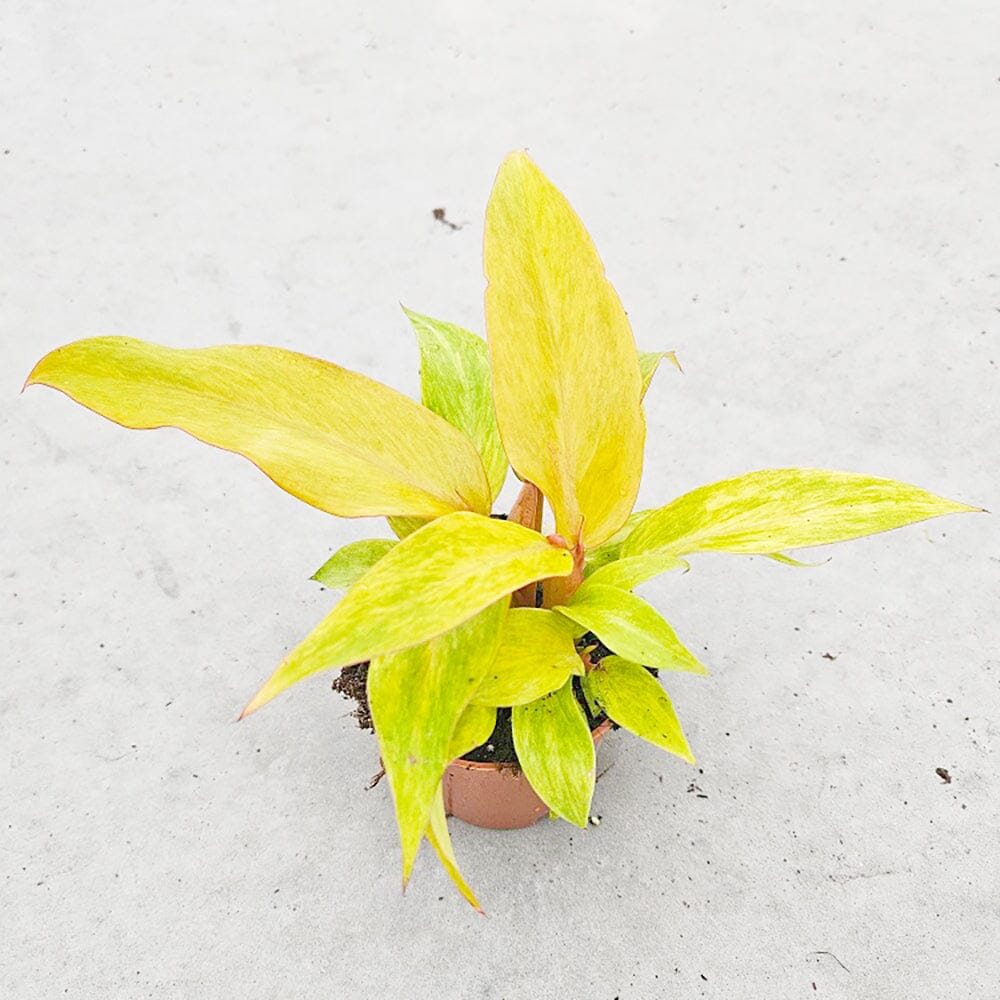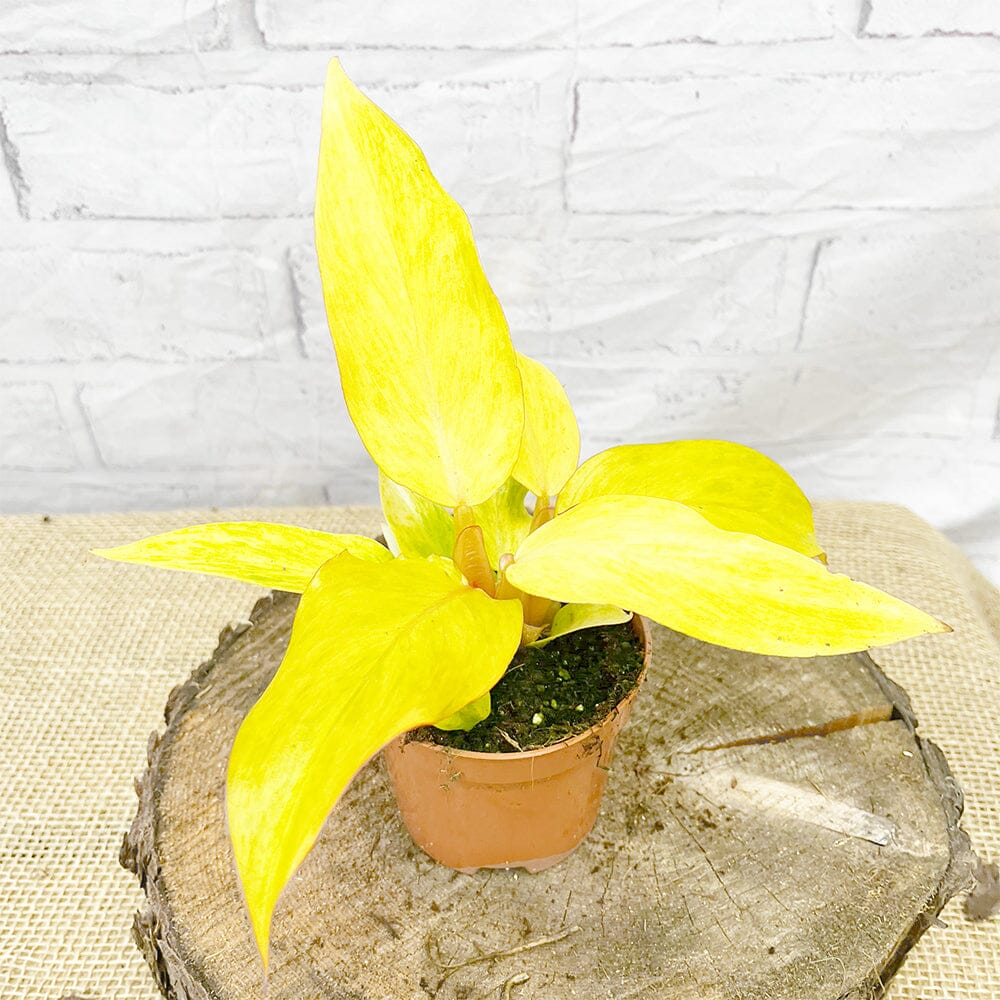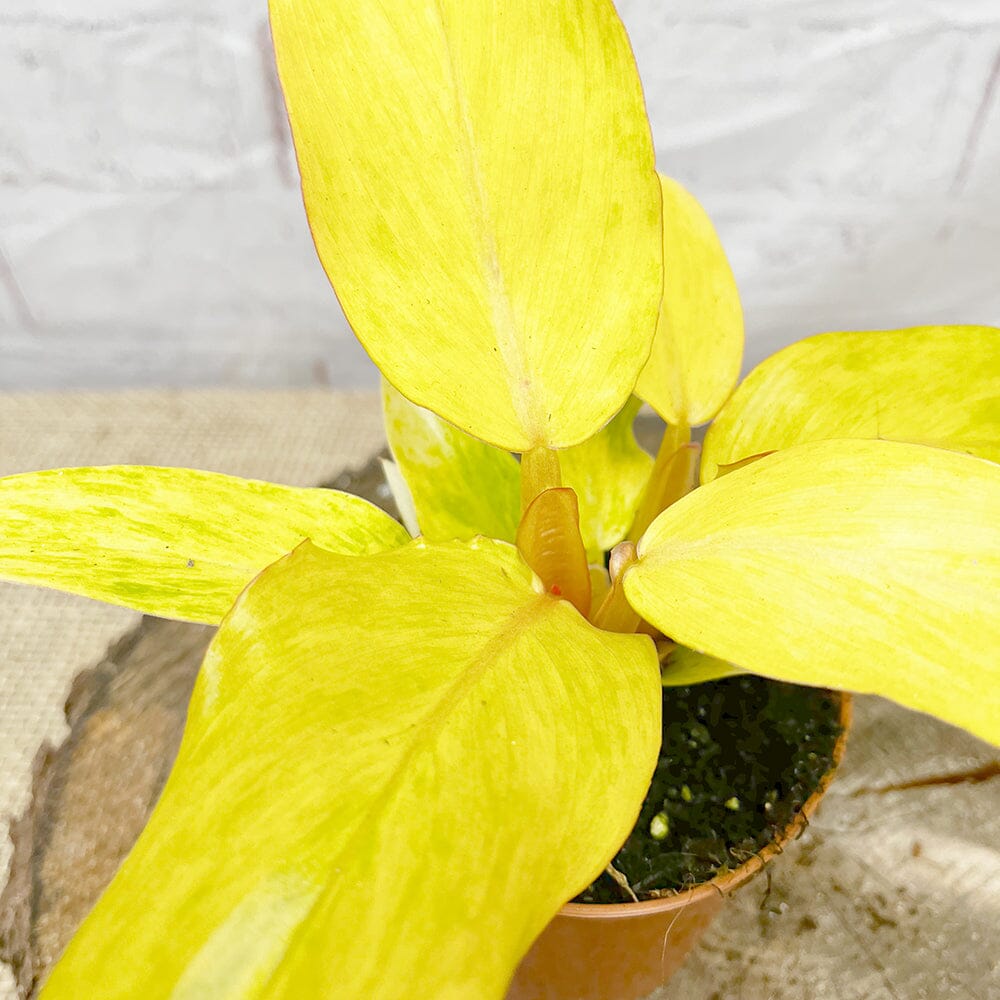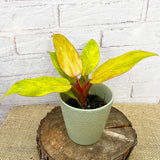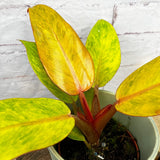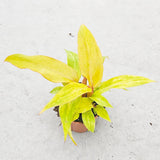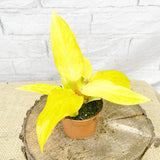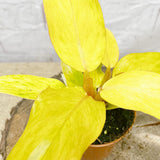20 - 30cm Philodendron Marmalade Quad Colour House Plant 10.5cm Pot
Philodendron 'Orange Marmalade (sometimes called "Philodendron quadricolor" or "Philodendron quad colour") is a cultivated variety of Philodendron, known for its striking foliage. The name "Orange Marmalade" aptly describes the blend of yellows, oranges, and greens that appear on its leaves.
Description:
- Leaves: The leaves can display a beautiful mix of green, yellow, and orange hues. Young leaves tend to show more vibrant orange and yellow shades, and as they mature, they transition to a green tone with hints of the other colours.
- Growth Habit: This is a climbing Philodendron, which means given the right support, it can grow vertically. If you allow it, it can also sprawl horizontally.
Care Guide:
-
Light: Prefers bright, indirect light. Too much direct sunlight can scorch the leaves, but too little light may reduce the vibrancy of its colours.
-
Water: Like most Philodendrons, the 'Orange Marmalade' doesn’t like to be too wet. Water when the top 1-2 inches of soil feels dry. Make sure the pot has good drainage to prevent root rot.
-
Humidity: This Philodendron appreciates higher humidity but can tolerate average indoor humidity. If your home's air is dry, consider placing a humidifier near the plant or occasionally misting it.
-
Soil: A well-draining potting mix is essential. Many enthusiasts prefer a mix of peat, perlite, and pine bark.
-
Fertilizer: During the growing season (spring and summer), feed the plant every month with a balanced liquid fertilizer. Reduce feeding in the fall and winter when the plant's growth slows down.
-
Temperature: Ideal temperatures range from 65°F to 80°F (18°C to 27°C). Avoid temperatures below 50°F (10°C).
-
Pruning: Pruning can help maintain its shape. If it gets too leggy, feel free to trim it back. This will also encourage fuller growth.
-
Propagation: Stem cuttings are the most common method. Cut a section of the stem that includes at least 2-3 nodes, let it air dry for a day, and then place it in water or soil. It should develop roots in a few weeks.
-
Pests: Watch out for common houseplant pests such as aphids, spider mites, and mealybugs. Regularly inspecting the leaves (both tops and undersides) can help catch infestations early.
-
Support: Since this is a climbing variety, consider providing a moss pole or some form of support for the plant to latch onto and grow vertically.
With the proper care, the Philodendron 'Orange Marmalade' can be a stunning addition to any indoor plant collection. Its vibrant hues can add a unique touch to your space.
Check out our YouTube video to see exactly how we pack for safe delivery.
- Plants are supplied in plastic nursery pots unless stated in the product title.
- Plants are not for consumption unless stated as edible.
- Plant heights can fluctuate +/- 10%.
- Our plants are kept at our tropical nursery in Yorkshire where we maintain an average temperature of 18c.










